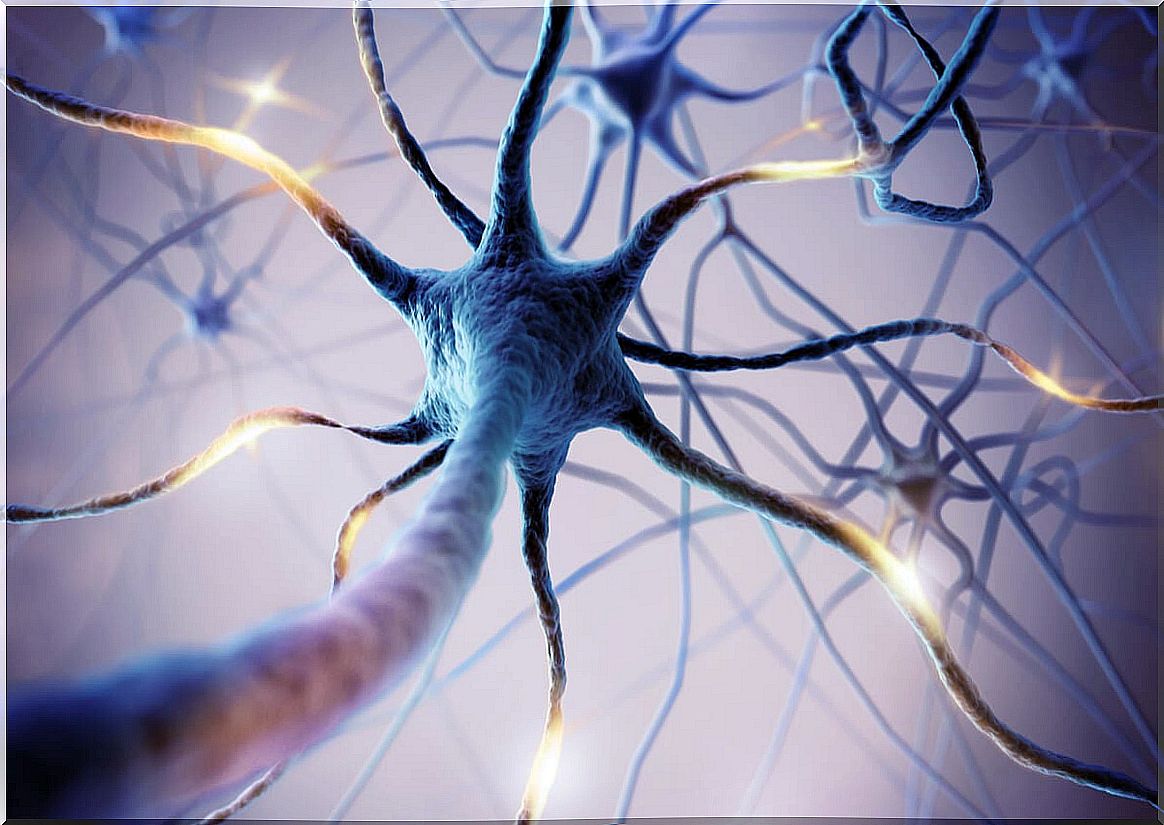What Is Amitriptyline And What Is It For?
Amitriptyline is a drug that is classified within antidepressant medications. Specifically, it is part of the group of tricyclic antidepressants. They are named for their chemical structure that includes a chain of three rings.
However, although many people are unaware of it, the truth is that this substance can be used for many other purposes, in addition to depression. For example, to treat insomnia or migraine. In this article we explain everything you need to know about amitriptyline and when it is used.
What is amitriptyline? How does it work?
As we have noted, amitriptyline is a tricyclic antidepressant medication. It is a substance that acts at the brain level causing certain neurotransmitters to increase their concentration in the nerve terminals. Specifically, it increases the availability of norepinephrine and serotonin.
Both norepinephrine and serotonin have an essential function on the nervous system. Your concentration is related to motivation, mood, feelings of stress, and anxiety.
Serotonin, as explained by the Association of Occupational Health and Prevention Specialists, is known as the happiness particle . However, in addition to being related to the feeling of well-being, it also intervenes in intestinal function.
Amitriptyline inhibits the reuptake of both neurotransmitters. In this way, by getting them to be in a higher concentration, their action at the brain and spinal cord is enhanced.
This medicine is usually given by mouth. It is rapidly absorbed, which allows its level in the blood to be maximum between 2 and 12 hours after having ingested it. It is mainly eliminated in the urine.
For whatever purpose amitriptyline is used, treatment should start at low doses. In the same way, when it comes to removing it, it should be done gradually. If it is stopped abruptly, side effects usually appear.

What is it for?
One of the main uses of amitriptyline is to treat depression. However, as specialists from the Mayo Clinic explain, they are no longer the first line of approach due to their side effects. Serotonin reuptake inhibitors are currently preferred.
Another indication for this drug is insomnia. The Center for Disease Control and Prevention (CDC) estimates that nearly 35% of Americans do not get enough sleep. The problem is that any medication that is prescribed for insomnia must be for a short period of time.
As Cochrane explains , amitriptyline is also used to treat neuropathic pain. It is one that occurs after the injury of a nerve. For example, in diabetic neuropathy or postherpetic neuralgia.
In the case of children, as explained by the Spanish Association of Pediatrics, amitriptyline may be indicated to treat nocturnal enuresis, which is urinary incontinence that occurs at night. It can even be useful to treat childhood depression, but only in those over 12 years old.
Side effects of amitriptyline
The main reason that amitriptyline is no longer the first treatment option for depression is that it often has side effects. These reactions can be more or less serious and vary depending on the person and the dose.
Importantly, this drug is contraindicated in many situations. For example, in people with certain heart problems, epilepsy, kidney disorders, or glaucoma. Similarly, it is not recommended for use in diabetics.
The most common side effects are dry mouth, constipation, and drowsiness. Also, there may be a headache or difficulty urinating. Among the serious adverse reactions is the fact that it can increase the heart rate or cause arrhythmias.
What is the recommended dosage?
The recommended dose of amitriptyline depends on what it is used for. As explained in the National Institutes of Health (NHS), it can be administered in tablet or liquid form. The tablets can be 10, 25 or 50 milligrams.
As we pointed out before, the ideal is to always start with the lowest dose. That is, 10 milligrams a day is recommended. Also, it is best to do it before going to sleep, as it can cause drowsiness, especially in the beginning.
The dose can be increased depending on the weight or the pathology. However, it should not exceed 75 milligrams daily due to the risk of side effects.
If a dose has been forgotten, it is recommended to take it as soon as possible, but not to combine several. Amitriptyline can be taken with food or on an empty stomach. It should not be chewed, as it can produce an unpleasant taste in the mouth.
Interactions of amitriptyline with other medications
Another big problem with amitriptyline is that it has a high risk of interacting with other drugs. In the first place, with substances that are used for cardiovascular diseases. For example, antiarrhythmics like quinidine.
It can also cause cardiac damage if amitriptyline is combined with adrenaline, phenylephrine or other catecholamines. The same is true for methadone. All of them can cause the heart’s electrical activity to become deregulated.
Other antidepressants can interact with this medicine, even after you have not taken them for a while. Opioid substances, such as morphine and oxycodone, which are also used for pain, can lead to respiratory problems and lethargy when combined with amitriptyline.

Amitriptyline requires a prescription
One of the most relevant aspects to highlight about this drug is that its effect may take time to appear. When used to relieve neuropathic pain, it takes 5 to 7 days to work.
In cases of depression, it takes months of treatment to be really effective. Also, it is important to point out again that it should be phased out.
During pregnancy it is not recommended to administer amitriptyline. At this stage, the ideal is to use other medications, as it could cause negative effects on the fetus.
This drug has many benefits, however it is not without side effects. No antidepressant drug should be used without medical indication. Similarly, it is essential to understand that certain problems cannot be treated with medication alone.
If your doctor prescribes you a treatment with amitriptyline, it is essential to follow the instructions for use. Doses must be as indicated and the time between them must be followed correctly.









